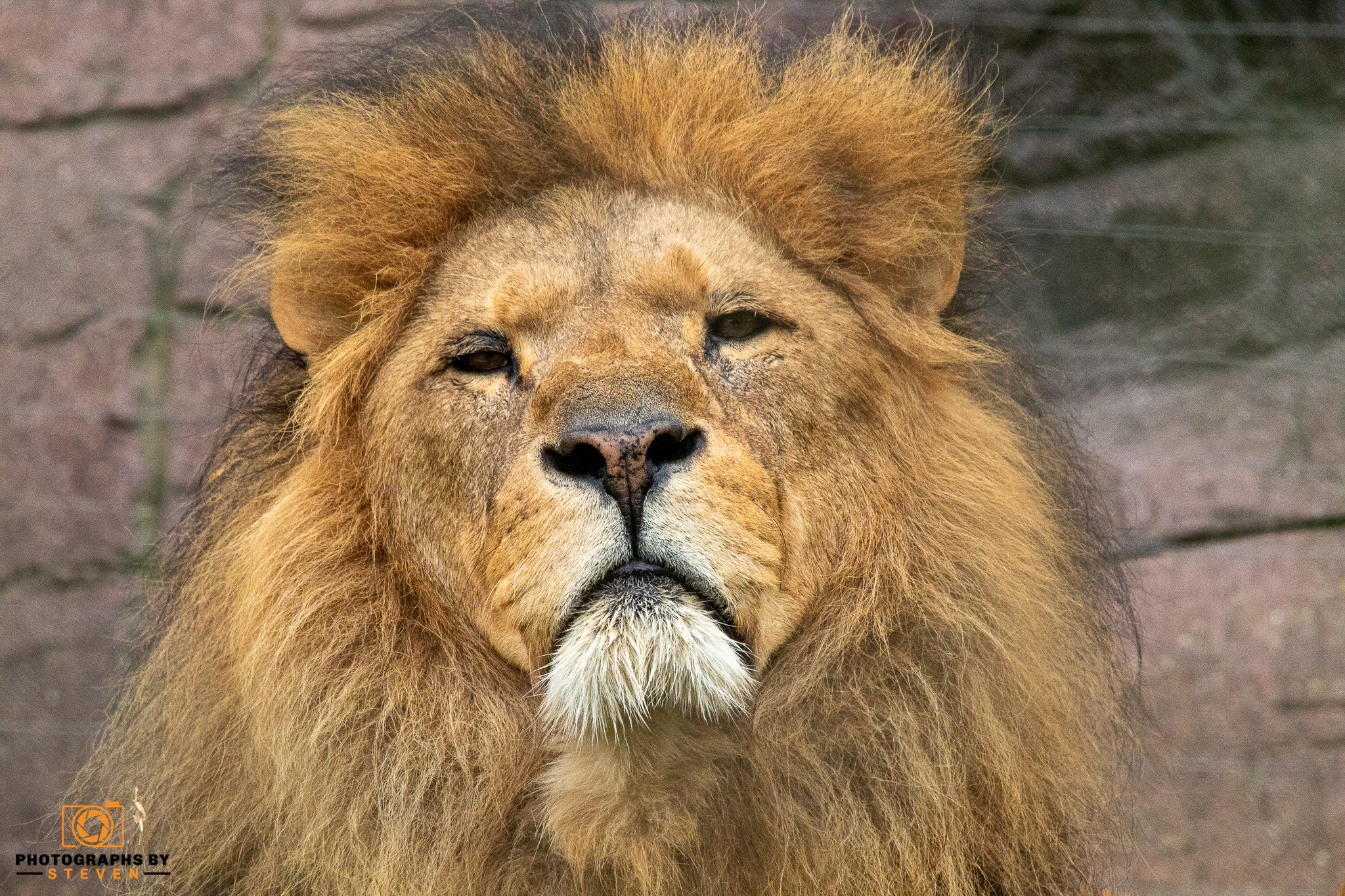Imagine the view of a male lion roaring on the wild. The lion is on all fours, its mouth wide open, exposing its teeth. The lion with golden mane is facing the camera. The background is made up of parched grass and a bright blue sky. It expresses strength and ferocity. From a different angle, think about a lioness and her two cubs on a dry savanna. The lioness is resting down, while the cubs are sitting nearby. A happy family!
For a wildlife photographer in the UK, seeing lions in your local Zoo is one of the most exciting things. It's like checking off something on their special list of things to photograph.
Where to Photograph Lions in the UK
If you're keen to capture images of lions, several zoos across the UK offer excellent opportunities:
- London Zoo: Nestled in the heart of the capital, London Zoo houses a pride of majestic lions, providing ample photographic opportunities in a meticulously designed habitat.
- Chester Zoo: Renowned for its conservation efforts, Chester Zoo in Cheshire offers a unique setting to photograph lions, with a focus on naturalistic environments.
- Colchester Zoo: Situated in Essex, Colchester Zoo is home to a variety of lions, allowing photographers to capture diverse behaviours and interactions.
- Bristol Zoo Gardens: Bristol Zoo Gardens, located in Clifton, presents a chance to photograph lions in detailed and carefully managed enclosures.
- Edinburgh Zoo: In Scotland, Edinburgh Zoo provides a scenic backdrop to capture the essence of lions, focusing on their wellbeing and conservation.
- Whipsnade Zoo: Set within Bedfordshire, Whipsnade Zoo offers expansive spaces for lions, enabling photographers to capture them in a range of natural poses.
- Knowsley Safari Park: Located in Merseyside, Knowsley Safari Park allows photographers to experience lions from the safety of their vehicles, offering a more immersive experience.
For the finest photographic opportunities, consider visiting during feeding times or enrichment activities when the lions are most active, and explore different vantage points within the viewing areas to get varied and natural shots.
Finding Lions
Finding lions in the field involves time and ability. Using the services of an expert guide will greatly improve your prospects. Volunteers frequently offer information and have in-depth knowledge of lion behavior and environment. To locate lions, look for minor indicators such as new claw marks, changes in the landscape, and the reactions of prey animals.

Camera Equipment
A DSLR or mirrorless interchangeable lens camera is suggested for lion photography. To capture the exquisite beauty of these magnificent creatures in diverse settings, one must possess a versatile telephoto zoom lens, such as the esteemed 100-400mm. Additionally, the incorporation of a shorter lens, such as the acclaimed 50-140mm or 70-200mm, can prove invaluable. Moreover, for the enchanting art of sunset photography, a wide-angle to mid-range zoom lens becomes an indispensable tool. Remember to bring polarizers, ND grad filters, and a monopod or beanbag for stabilization.
Camera Settings
- Exposure: You can use aperture priority with ISO changes or pick your desired aperture and shutter speed and let auto ISO do the rest. Both ways work well, so it just depends on what you like better.
- Autofocus: To successfully track moving subjects, use continuous autofocus (e.g., AF-C). Adapt your autofocus points to your composition and lion behavior.
- Burst Mode: Use your camera's burst mode to capture action shots, such as lions yawning or sprinting. Take care not to misuse it.
- Review photographs: While shooting, inspect your photographs on a regular basis, paying attention to the histogram and highlights to avoid overexposing crucial sections.
Capturing the Essence
Lions exhibit intriguing behavior, ranging from sweet moments like head stroking to furious interactions. Keep an eye out for these times because they tell a narrative.
Display the lion's raw power while also capturing its renowned roar. Low angles are excellent for portraying size and presence.
Lion images with alluring yellow eyes can be enthralling. Concentrate on their eyes and utilize wide-open apertures to isolate this essential feature.
Lions are known to avoid water, yet when they do engage with it, it is an uncommon sight.
Wildlife photography takes perseverance, and getting the ideal shot can take hours. Keep in mind that your photography can help with conservation efforts. Protected area support through photographic tourism helps to safeguard lion habitats and minimize poaching.
Every moment spent with these magnificent beasts provides an opportunity to capture spectacular photos. You may capture the spirit of these legendary predators while contributing to their conservation by studying their behavior, selecting the correct equipment, and being patient. Remember to handle this opportunity with respect for both the lions and their environment, and your photography will be an effective instrument in raising awareness about their conservation requirements.



Leave me a comment
Thank you for reading my post, if you want to leave a comment, you can do so below.